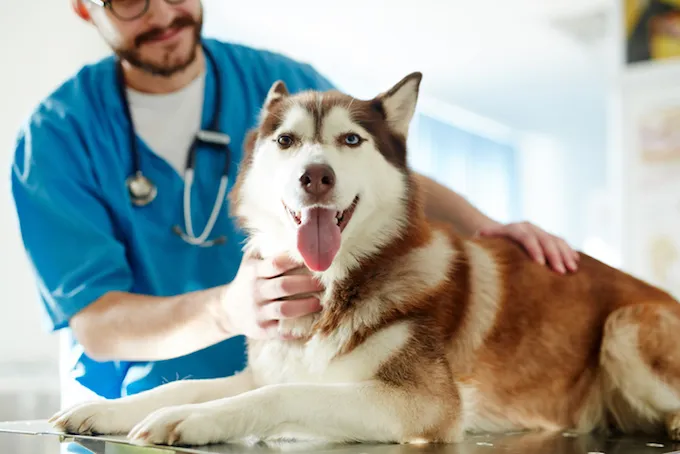Pneumonia due to overactive immune response in dogs is caused by an allergic reaction in the lungs. The condition can lead to breathing problems.
Generally, living in polluted or moldy environments can be a factor in causing the condition.
Technically, the condition is also known as eosinophilic pneumonia in dogs.
If you see the signs of the condition in your dog, then get to a veterinarian for a proper diagnosis and treatment.
Here’s what you should know about the symptoms, causes, and treatments for the condition.
Symptoms of pneumonia due to overactive immune response in dogs
The condition produces a range of symptoms. For example, some of the most common symptoms include:
- Breathing problems
- Avoiding exercise
- Fever
- Coughing
- Weight loss
- Appetite loss
- Wheezing
- Nose discharge (yellow or green)
Causes of pneumonia due to overactive immune response in dogs

The cause of the condition can be a number of things. For instance, some of the common causes of the condition include:
- Living in polluted environments
- Living in moldy environments
- Parasites
- Viruses
- Pollen
- Fungal infections
- Bacterial infections
Additionally, Siberian Huskies seem most at risk of developing the condition.
Treatments for the condition in dogs
Firstly, your vet will ask about your dog’s symptoms. Secondly, your vet will ask about your dog’s full medical history.
Thirdly, your vet will carry out a full physical examination. Blood, poop, and urine tests will be taken. Additionally, your dog’s blood gas levels will also be measured.
Finally, fluid samples from your dog’s lungs and imaging techniques can be used to confirm the condition.
Unfortunately, severe cases of the condition will require your dog to be hospitalized. This is to stabilize your dog’s condition. Intravenous fluid therapy will be used, along with oxygen therapy.
Generally, medication is used to treat the condition. This can help with any inflammation. As always, if your vet prescribes your dog any medicine, make sure to stick to the correct dose and frequency instructions. Also, complete the full course of medicine.
While recovering at home it is important to provide your dog with a quiet and calm environment. Also, your dog’s exercise will need to be limited. Your vet will help come up with a safe exercise plan for your dog.
Have you ever cared for a dog who suffered from this condition? How did your vet help your dog recover? Let us know in the comments section below.









